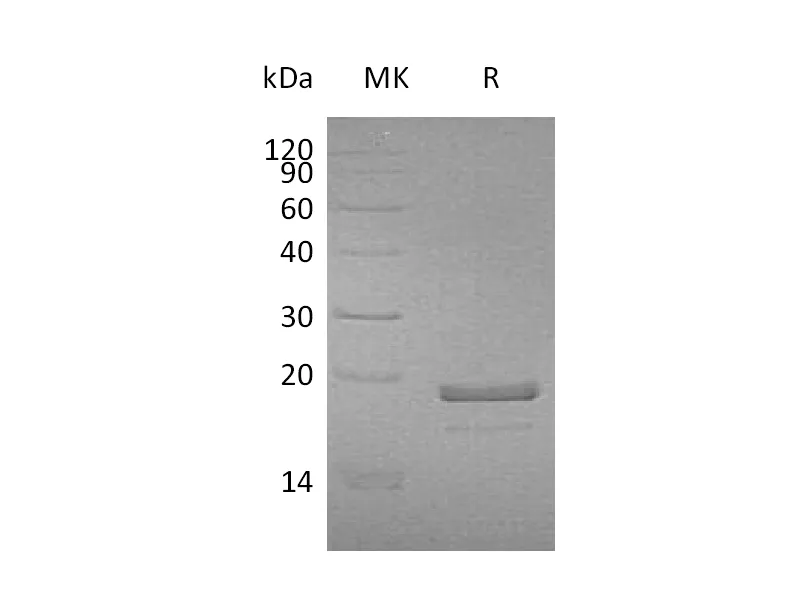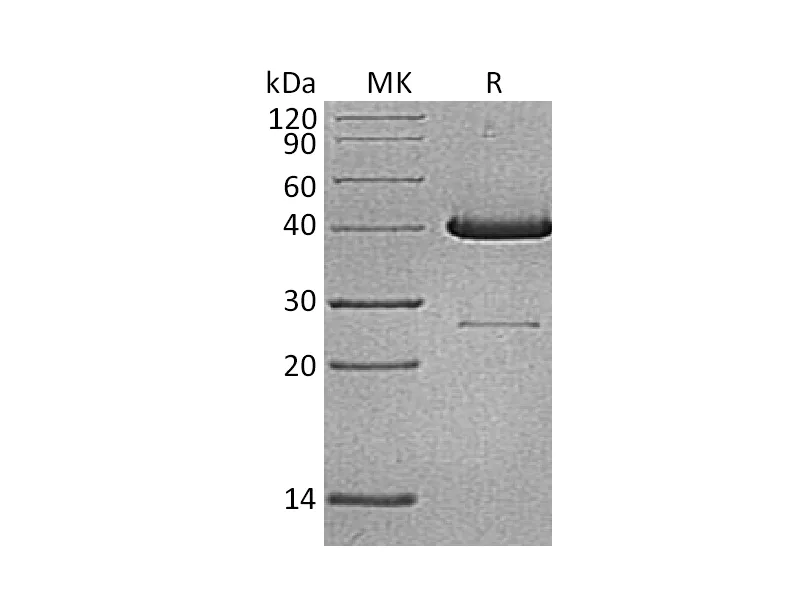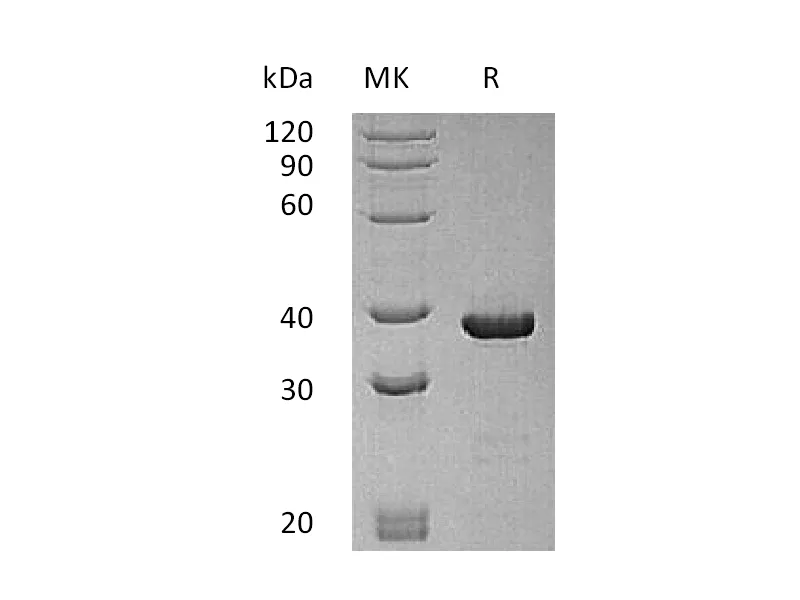| 产品名称 |
Recombinant Mouse SP-D (C-6His) |
| 英文名称 |
Pulmonary Surfactant-associated Protein D/SP-D |
| 纯度 |
Greater than 95% as determined by reducing SDS-PAGE |
| 内毒素 |
<1 EU/µg as determined by LAL test. |
| 蛋白构建 |
Recombinant Mouse Pulmonary Surfactant-associated Protein D is produced by our Mammalian expression system and the target gene encoding Ala20-Phe374 is expressed with a 6His tag at the C-terminus. |
| Accession |
P50404 |
| 表达宿主 |
Human Cells |
| 种属 |
Mouse |
| 预测分子量 |
36.7 KDa |
| 制剂 |
Lyophilized from a 0.2 μm filtered solution of 20mM MES, 150mM NaCl, pH 7.4. |
| 运输方式 |
The product is shipped at ambient temperature.Upon receipt, store it immediately at the temperature listed below. |
| 稳定性&储存 |
Store at ≤-70°C, stable for 6 months after receipt.Store at ≤-70°C, stable for 3 months under sterile conditions after opening. Please minimize freeze-thaw cycles. |
| 复溶 |
Always centrifuge tubes before opening.Do not mix by vortex or pipetting.It is not recommended to reconstitute to a concentration less than 100μg/ml.Dissolve the lyophilized protein in distilled water.Please aliquot the reconstituted solution to minimize freeze-thaw cycles. |
| 分子别名 |
| COLEC7; Collectin 7; Lung surfactant protein D; PSPD; pulmonary surfactant-associated protein D; SFTPD; SPD; SP-D; SP-Dpulmonary surfactant apoprotein; surfactant protein D; surfactant, pulmonary-associated protein D |
| 背景介绍 |
| Pulmonary surfactant-associated protein D (SP‑D) is a 43 kDa member of the collectin family of innate immune modulators. Mouse SP‑D cDNA encodes a 19 aa signal sequence and a 355 aa mature region with a 25 aa N‑terminal linking‑region, a 177 aa hydroxyproline and hydroxylysine collagen‑like domain, a 46 aa coiled‑coil segment, and a 106 aa, C‑terminal collectin‑like C‑type lectin domain . SP‑D is found in serum, plasma, broncho‑alveolar lavage (BAL) fluid, and amniotic fluid. It also binds SIRP alpha and the calreticulin/CD91 complex on macrophages. SP‑D contributes to the lungs defense against inhaled microorganisms, organic antigens and toxins. It Interacts with compounds such as bacterial lipopolysaccharides, oligosaccharides and fatty acids and modulates leukocyte action in immune response. It may participate in the extracellular reorganization or turnover of pulmonary surfactant. It binds strongly maltose residues and to a lesser extent other alpha-glucosyl moieties. |
注意事项
本司产品仅用于科研,不用于临床诊断和治疗




